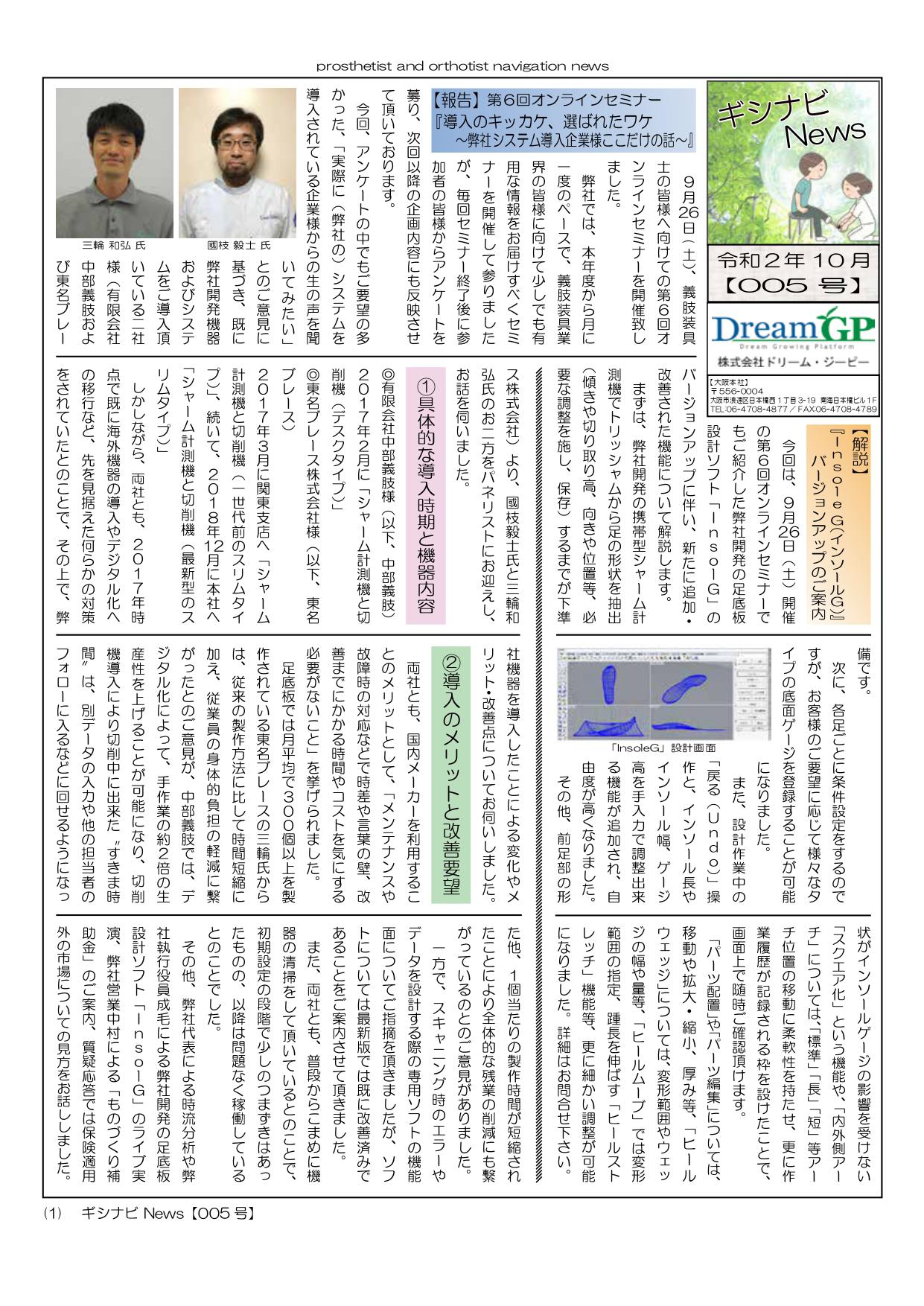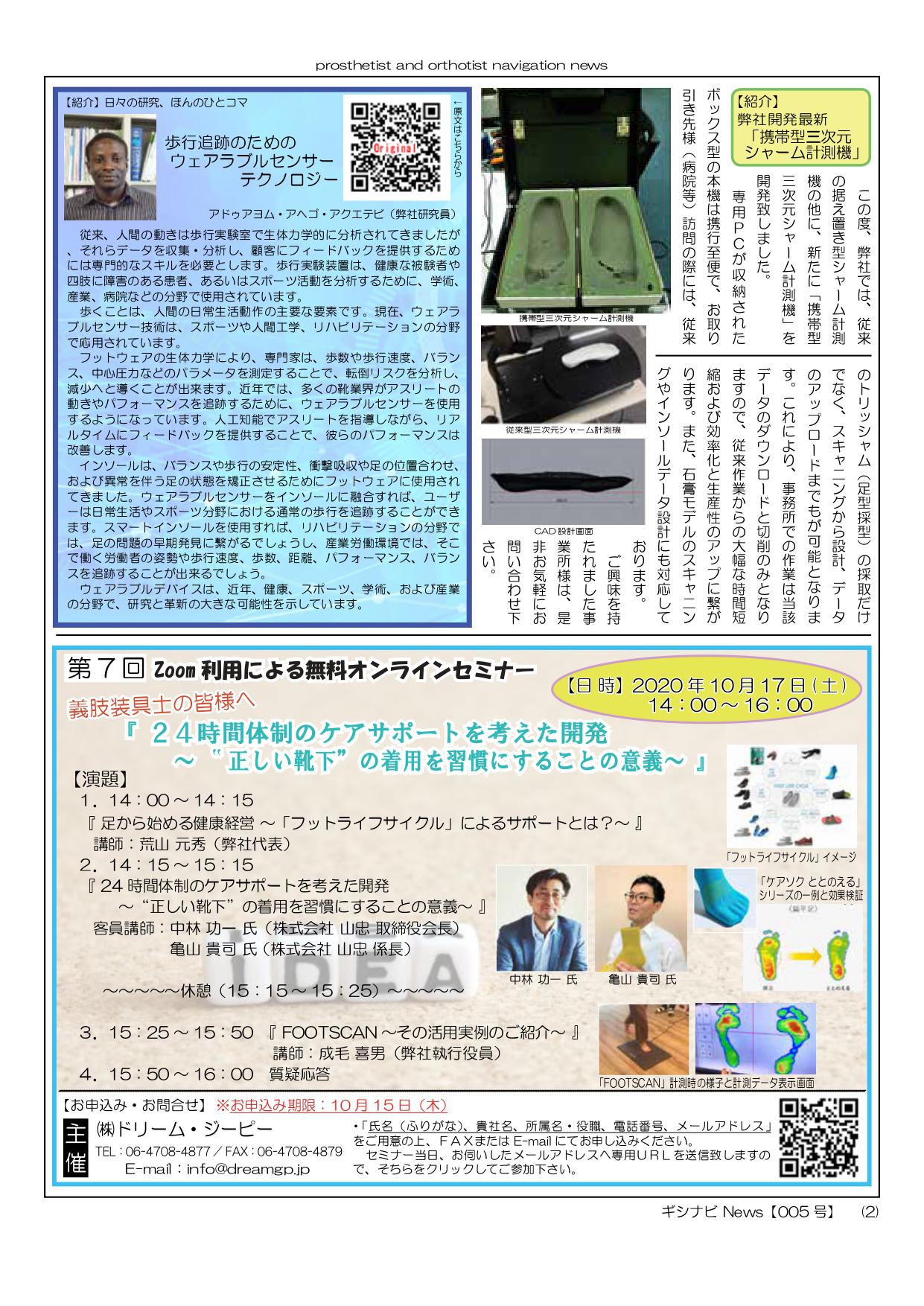ギシナビNews【第5号】
2020/10/05


Wearable sensor technology for gait monitoring
Akouetevi Aduayom-Ahego, PhD
Human movement has been analyzed traditionally in a biomechanics gait laboratory. This requires professional skills to collect data, analyze and give feedback to the customer. Gait laboratory equipment are used in several fields such as academics, industries and hospitals to analyze healthy subjects, patients with limb impairment and sports activities. Walking has been a major factor for humans for daily living activities. Currently, wearable sensor technology has been applied in sports fields, ergonomics and rehabilitation fields. In footwear biomechanics, the measurements of parameters such as: steps count, gait speed, balance, and center of pressure enable the professionals to analyze and reduce the risk of falling. Recently many footwear industries have been using the wearable sensors to monitor movements and performance of an athlete. Giving a real time feedback to the user while coaching the athlete with artificial intelligence will improve their performance. Insoles have been used in footwear to stabilize balance, walking stability, shock absorption, foot alignment and correction of foot with anomalies. Integrating a wearable sensor into the insole will allow the user to monitor normal walking in daily life activities and during sports disciplines. In the rehabilitation field, smart insoles can be used to detect foot problems at early stages. In industrial environments, workers can use smart insoles to track their posture, walking speed, step count, distance, performance and balance.
Wearable devices have shown much potential for research and innovation recently in health, sports, academic and industrial fields.
2022/01/11
ギシナビNews【第20号】2021/12/28
ギシナビNews【第19号】2021/11/19
ギシナビNews【第18号】2021/10/05
ギシナビ News【第17号】2021/09/06
ギシナビNews【第16号】2021/08/05
ギシナビNews【第15号】2021/07/06
ギシナビNews【第14号】2021/06/14
ギシナビNews【第13号】2021/05/07
ギシナビNews【第12号】2021/04/06
ギシナビNews【第11号】2021/03/05
ギシナビNews【第10号】2021/02/05
ギシナビNews【第9号】2021/01/05
ギシナビNews【第8号】2020/12/08
ギシナビNews【第7号】2020/11/05
ギシナビNews【第6号】2020/10/05
ギシナビNews【第5号】2020/09/07
ギシナビNews【第4号】2020/08/05
ギシナビNews【第3号】2020/07/06
ギシナビNews【第2号】2020/06/10
ギシナビNews【創刊号】
